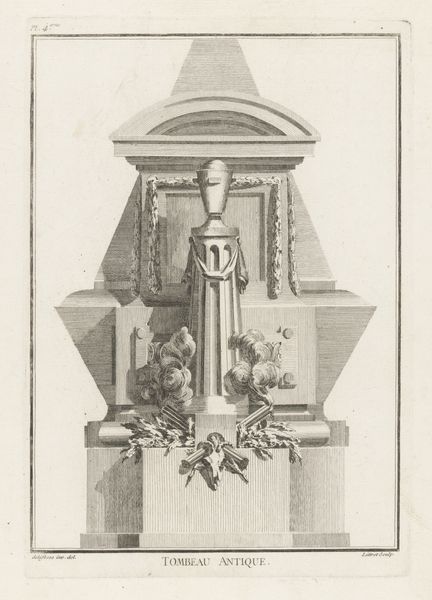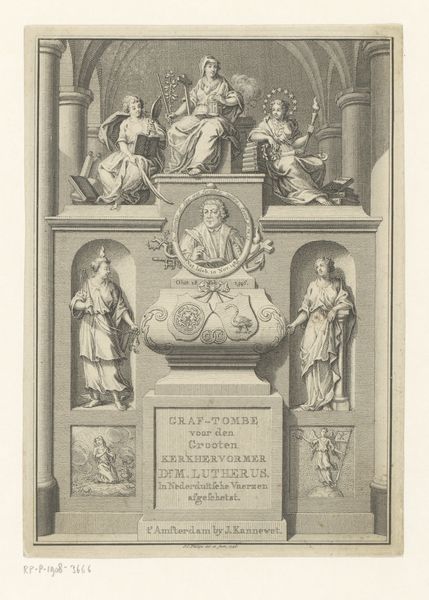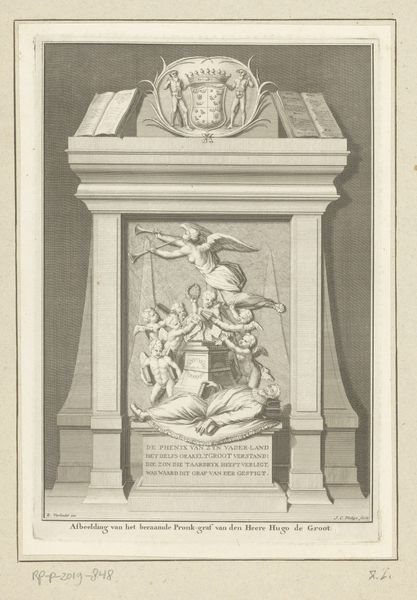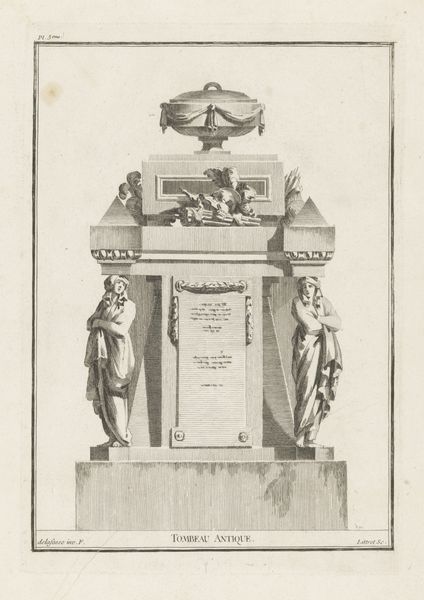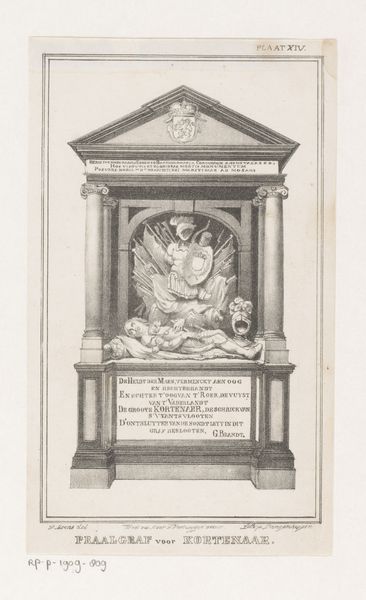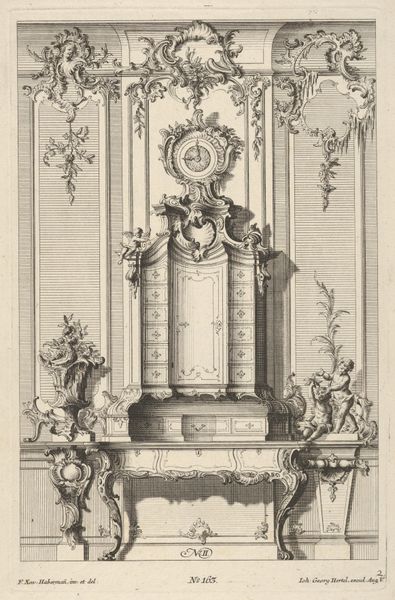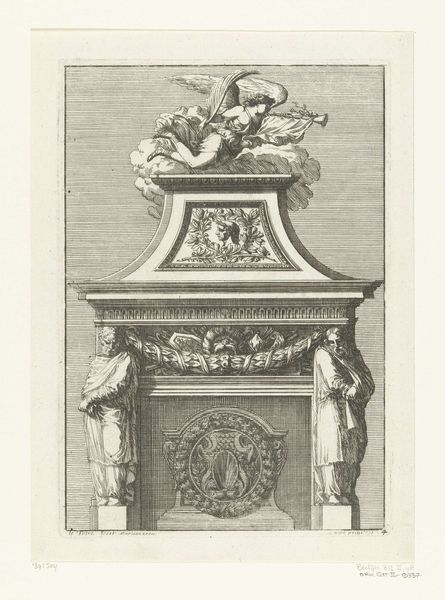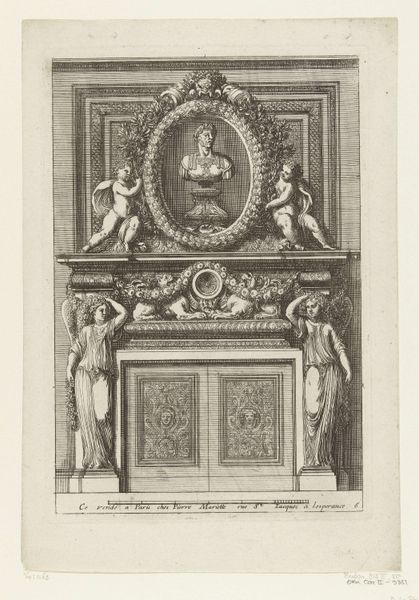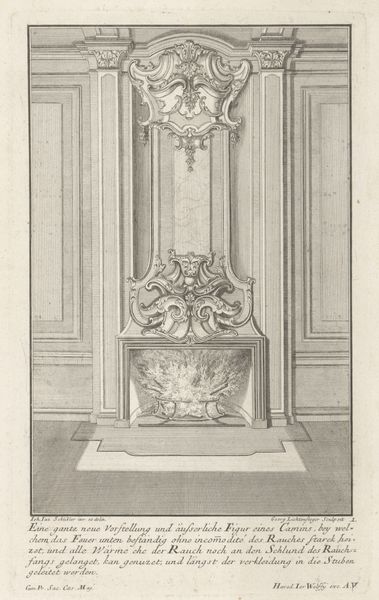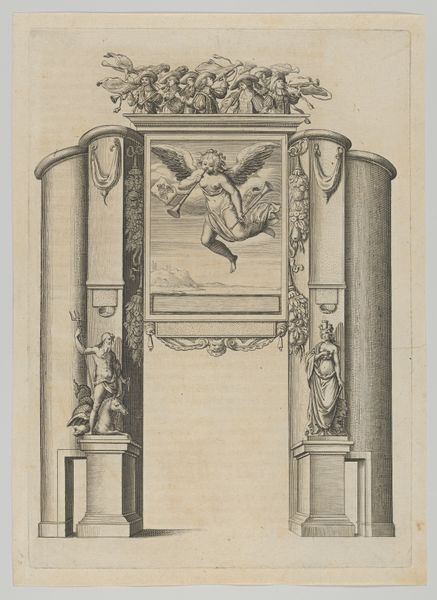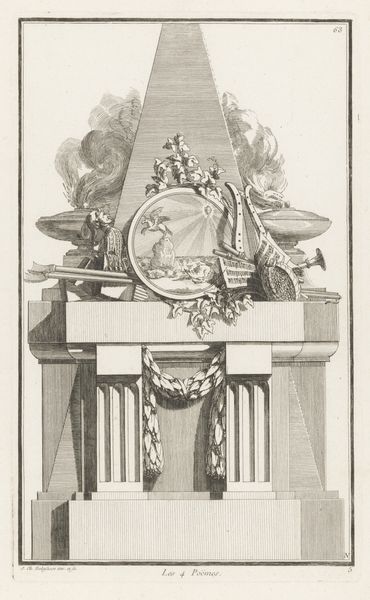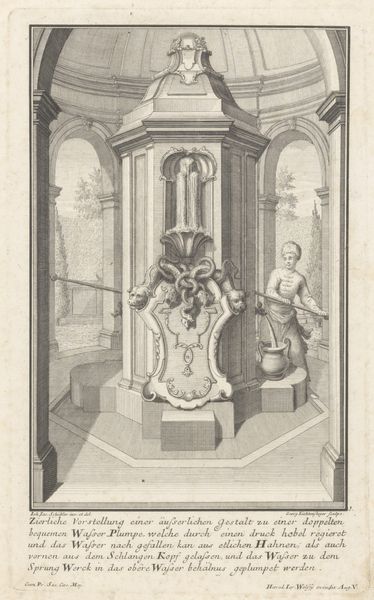
Graftombe van Henri Bonneau de Trassy in de kathedraal van Doornik 1647 - 1714
0:00
0:00
print, etching, relief, engraving
#
baroque
# print
#
etching
#
relief
#
old engraving style
#
line
#
history-painting
#
engraving
Dimensions: height 337 mm, width 198 mm
Copyright: Rijks Museum: Open Domain
This print depicting the tomb of Henri Bonneau de Trassy was made by Sébastien Leclerc I, likely in the late 17th or early 18th century. It's an etching, a process that involves coating a metal plate with wax, drawing into the wax to expose the metal, and then bathing the plate in acid. The acid bites into the exposed lines, creating grooves that hold ink. The resulting image is all about line, and here that line skillfully describes a lavish monument. We see classical motifs, heraldry, even a skull at the very top – all signs of wealth and status. Look closely, and you can almost feel the weight of that imagined marble. What’s interesting is how this print flattens the three-dimensional grandeur of the tomb. Etching, as a reproductive medium, democratizes access, turning a unique object into something potentially available to a wider audience. It speaks to the burgeoning print culture of the time, where images could circulate and spread ideas in new ways. So while the tomb itself was about asserting social hierarchy, this print hints at a shift in power, a move towards broader access to imagery and information.
Comments
No comments
Be the first to comment and join the conversation on the ultimate creative platform.
